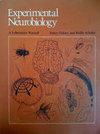产生星形胶质细胞特异性 BEST1 条件性基因敲除小鼠,降低大脑中的强直性 GABA 抑制。
IF 2.1
4区 医学
Q3 MEDICINE, RESEARCH & EXPERIMENTAL
引用次数: 0
摘要
Bestrophin-1(BEST1)是一种 Ca2+ 激活的阴离子通道,因其在星形胶质细胞中的作用而闻名。Best1 对神经胶质递质(包括 GABA)具有通透性,可促进 GABA 的强直性抑制并调节邻近神经元的突触传递。尽管星形胶质细胞 BEST1 具有重要功能,但目前还没有针对这些功能的基因工程细胞型特异性条件小鼠模型。在这项研究中,我们开发了一种星形胶质细胞特异性 BEST1 条件性基因敲除(BEST1 aKO)小鼠品系。利用胚胎干细胞(ES细胞)靶向方法,我们培育出了Best1 悬浮小鼠(C57BL/6JCya-Best1em1flox/Cya),其Best1的第3、4、5和6外显子两侧有两个loxP位点。通过与 hGFAP-CreERT2 小鼠杂交,我们产生了 Best1 悬浮/hGFAP-CreERT2 小鼠,从而在人类 GFAP 启动子下实现了他莫昔芬诱导的 Best1 基因缺失。我们对其在纹状体、海马齿状回(HpDG)和丘脑副筋膜核(Pf)等多个脑区的特征进行了研究。与Cre阴性对照组相比,我们在免疫组化(IHC)中观察到BEST1蛋白表达明显减少,在膜片钳记录中观察到强直性GABA抑制。在纹状体中,强直 GABA 抑制降低了 66.7%,在 HpDG 中降低了 46.4%,在 Pf 中降低了 49.6%。我们的研究结果表明,星形胶质细胞中的 BEST1 通道对局部脑区的强直性抑制有显著作用。这些小鼠不仅对GABA的强直性释放,而且对星形胶质细胞BEST1介导的神经胶质递质的强直性释放都具有重要的研究价值。本文章由计算机程序翻译,如有差异,请以英文原文为准。
Generation of Astrocyte-specific BEST1 Conditional Knockout Mouse with Reduced Tonic GABA Inhibition in the Brain.
Bestrophin-1 (BEST1) is a Ca2+-activated anion channel known for its role in astrocytes. Best1 is permeable to gliotransmitters, including GABA, to contribute to tonic GABA inhibition and modulate synaptic transmission in neighboring neurons. Despite the crucial functions of astrocytic BEST1, there is an absence of genetically engineered cell-type specific conditional mouse models addressing these roles. In this study, we developed an astrocyte-specific BEST1 conditional knock-out (BEST1 aKO) mouse line. Using the embryonic stem cell (ES cell) targeting method, we developed Best1 floxed mice (C57BL/6JCya-Best1em1flox/Cya), which have exon 3, 4, 5, and 6 of Best1 flanked by two loxP sites. By crossing with hGFAP-CreERT2 mice, we generated Best1 floxed/hGFAP-CreERT2 mice, which allowed for the tamoxifen-inducible deletion of Best1 under the human GFAP promoter. We characterized its features across various brain regions, including the striatum, hippocampal dentate gyrus (HpDG), and Parafascicular thalamic nucleus (Pf). Compared to the Cre-negative control, we observed significantly reduced BEST1 protein expression in immunohistochemistry (IHC) and tonic GABA inhibition in patch clamp recordings. The reduction in tonic GABA inhibition was 66.7% in the striatum, 46.4% in the HpDG, and 49.6% in the Pf. Our findings demonstrate that the BEST1 channel in astrocytes significantly contributes to tonic inhibition in the local brain areas. These mice will be valuable for future studies not only on tonic GABA release but also on tonic release of gliotransmitters mediated by astrocytic BEST1.
求助全文
通过发布文献求助,成功后即可免费获取论文全文。
去求助
来源期刊

Experimental Neurobiology
Neuroscience-Cellular and Molecular Neuroscience
CiteScore
4.30
自引率
4.20%
发文量
29
期刊介绍:
Experimental Neurobiology is an international forum for interdisciplinary investigations of the nervous system. The journal aims to publish papers that present novel observations in all fields of neuroscience, encompassing cellular & molecular neuroscience, development/differentiation/plasticity, neurobiology of disease, systems/cognitive/behavioral neuroscience, drug development & industrial application, brain-machine interface, methodologies/tools, and clinical neuroscience. It should be of interest to a broad scientific audience working on the biochemical, molecular biological, cell biological, pharmacological, physiological, psychophysical, clinical, anatomical, cognitive, and biotechnological aspects of neuroscience. The journal publishes both original research articles and review articles. Experimental Neurobiology is an open access, peer-reviewed online journal. The journal is published jointly by The Korean Society for Brain and Neural Sciences & The Korean Society for Neurodegenerative Disease.
 求助内容:
求助内容: 应助结果提醒方式:
应助结果提醒方式:


